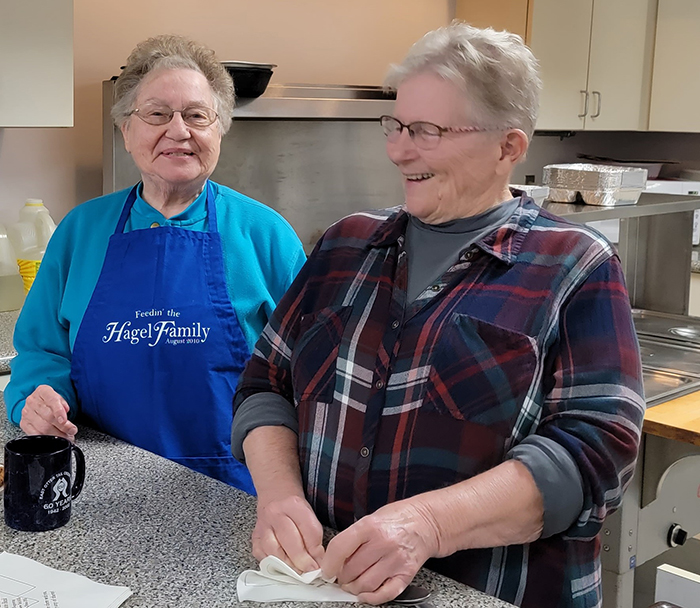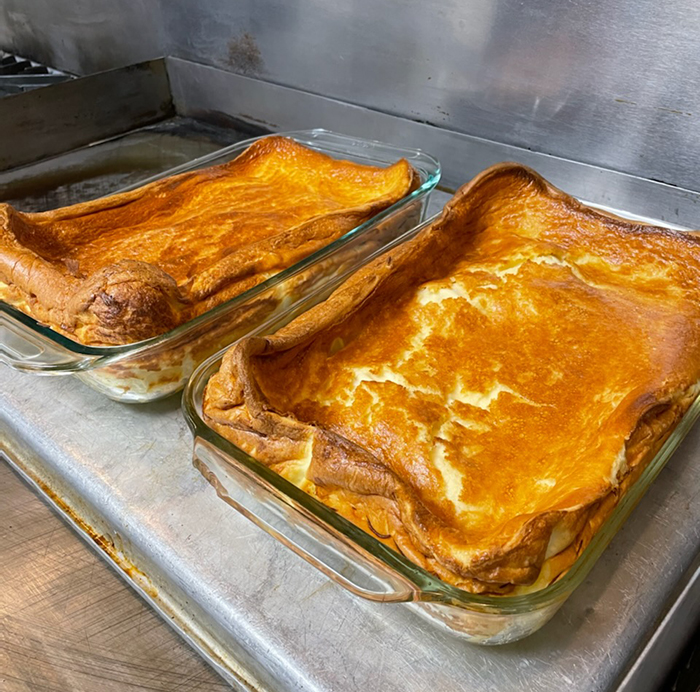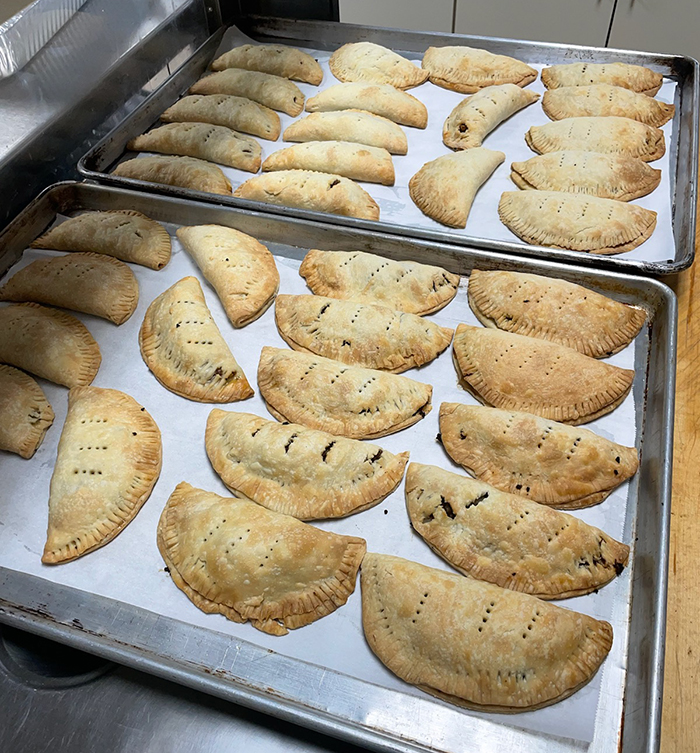Lard the size of an egg
Published on December 20, 2022 at 3:28pm GMT+0000 | Author: Chad Koenen
0
Lard the Size of an Egg is a series based on stories collected from New York Mills community members by historian and writer Chris Marcotte. Marcotte spent six weeks in September and October at the Cultural Center Retreat House working on her 1897 murder mystery. Most of the stories Marcotte compiled while there focus on a family recipe, a story that went with it, and a photograph. This is part six of the seven-part series which will run weekly through December 21.
Louise (Jetenberg) Jokela was born and raised in New York Mills. And like many of the lovely individuals I had the chance to interview, she grew up in a Finnish household. “I’m 98% Finnish—my grandparents spoke both English and Finnish,” Louise said.

Her mother, Elaine (Hagel) Jetenberg made plenty of flatbread. “Mom had a big bowl, and always used potato water and fresh yeast. It was an all-day procedure—it had to rise a couple times and then it was formed into loaves, and finally baked. There is an art to kneading the dough, and Mom had it.”
The Hagel side of the family has a long history in the area. “My great-grandfather Israel, immigrated from Finland to Michigan in about 1870. He worked in the coal mines there for a year or two, and then boarded a train bound for Astoria, Washington when he learned there were better jobs there.” By the time Israel got to Duluth, someone suggested the opportunities in New York Mills, Minnesota. Eager to take advantage of the chance to homestead land, he walked from Duluth to Newton township where he filed a claim on eighty acres.
Israel saved money until he had enough to bring Margaret, the woman he wanted to be his bride, from Finland to Minnesota. They were married in Fergus Falls in 1878. Although listed as a farmer on the 1880 United States census (and all censuses after that), Israel was also a religious leader. “He started the first service with nine people in Newton Township. Eventually they built a church out in the country and in 1945 it was moved into town.”

A total of 532 pasties were made for the annual Finn Creek Open Air Museum fundraiser recently.
Israel and Margaret had six sons before any daughters were born. One of the sons, Carl Israel, is Louise’s grandfather. He too was a farmer in Newton township. He married Lydia Salo, and they had four children, including Elaine, Louise’s mother.
Elaine appears to be the first woman in Louise’s family who, in addition to helping on the farm, worked outside the home, at least before the babies came. In 1940, while she and her husband Wilmar Jetenberg were residing with his aunt and uncle, Elaine was employed as a clerk at a grocery store. Wilmar served in the Navy during WWII, after the birth of Louise in 1942.
Louise married Alvin Amberg in 1960. They lived, worked, and raised their family in Wadena. After retirement and the death of her husband, Louise returned to New York Mills. She re-established old acquaintances and made new friends. She delivered Meals on Wheels, and for the past five years, she has been the coordinator of the Food Services program at the New York Mills Senior Center.
Louise’s story is about a couple of the activities in that kitchen.
Pannukakku and Pasties
“On the first Saturday of every month, we have a fundraiser breakfast here at the center to help pay the rent. Usually it’s pancakes, eggs, and meat, but occasionally it is the Finnish pannukakku. We always get a big crowd when the word is out that it’s on the menu.
Pannakakku is easy to make and can be served anytime really, but it works for our breakfast. Sometimes we have such a big turnout that we run out of ingredients and need to send someone to the store for eggs or milk. We serve it with fruit and breakfast meat. Traditionally it’s served with blueberries thickened with a bit of cornstarch.
About a year ago, we had a pannukakku breakfast scheduled, and when we got here, the oven wouldn’t light. So, I went back home and made it there. Then one of the other girls (probably Patty) or my husband Dale kept running back to the center with hot pannukakku. That was a challenge, but we did it!
Now pasties aren’t a Finnish tradition, but they have followed miners from Europe, and plenty of Finns worked in mines when they first came to the United States. [Note: not only did Louise’s great-grandfather Hagel work in mines, but also her grandfather John Jetenberg. He died of tuberculosis in Butte, Montana after working in the mines there.]
I did some research and learned that one of the advantages of having a nutritious meal that could be held and eaten using one hand is that it prevented contamination of the poisonous materials miners often had to work with. Anyway, we needed a fundraiser for the Finn Creek Summer Festival, so we decided to make pasties. Five hundred and thirty-two pasties!
We made the crust and filling from scratch a day or two before we assembled them. The assembly line included rolling the dough, cutting them into circles, filling them, sealing, and crimping them, and baking them. It took us two long afternoons. I did the rolling out of the dough, and oh my arms were tired when we were done. It was a very good fundraiser though.”
Recipes and photos from the Lard the Size of an Egg stories can be seen on the New York Mills Cultural Arts Center website www.kulcher.org.

